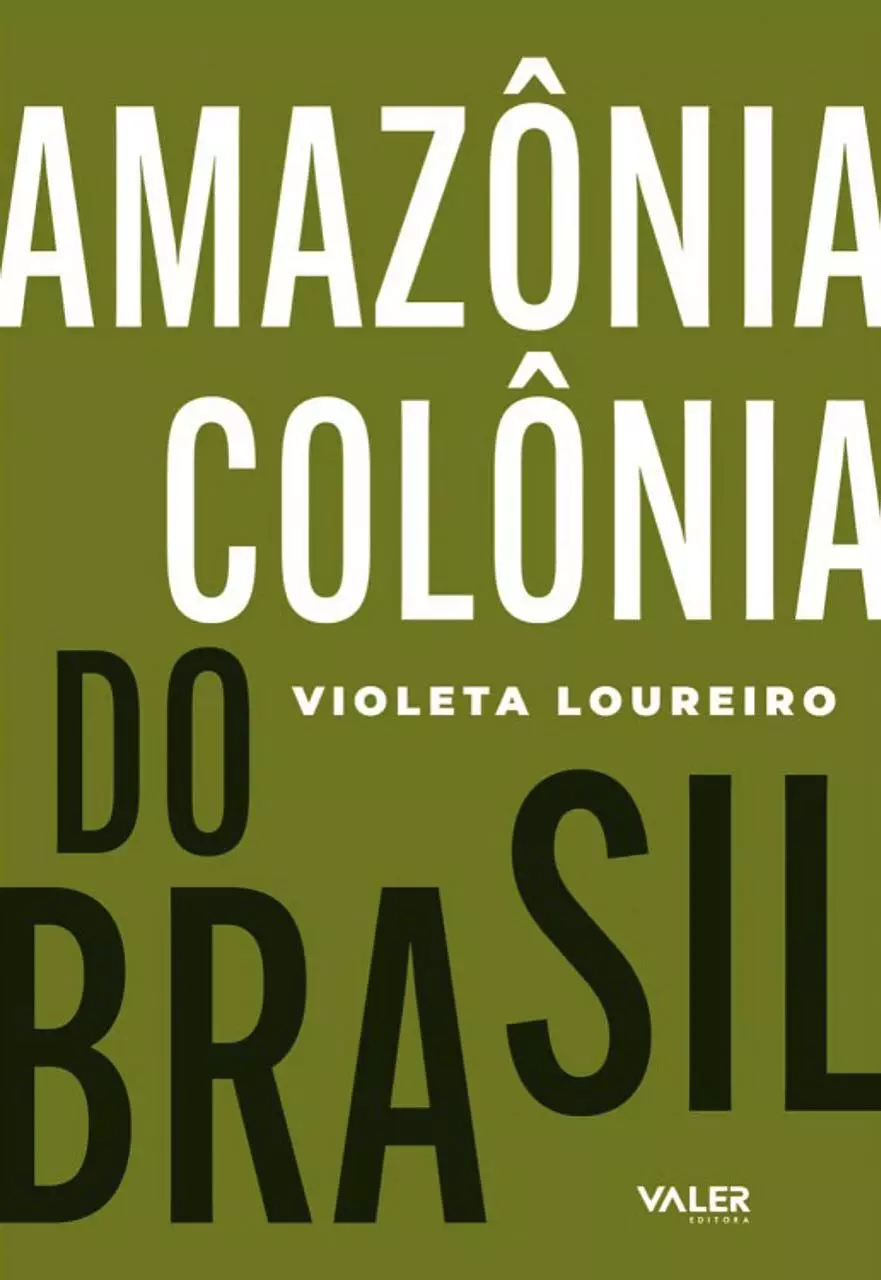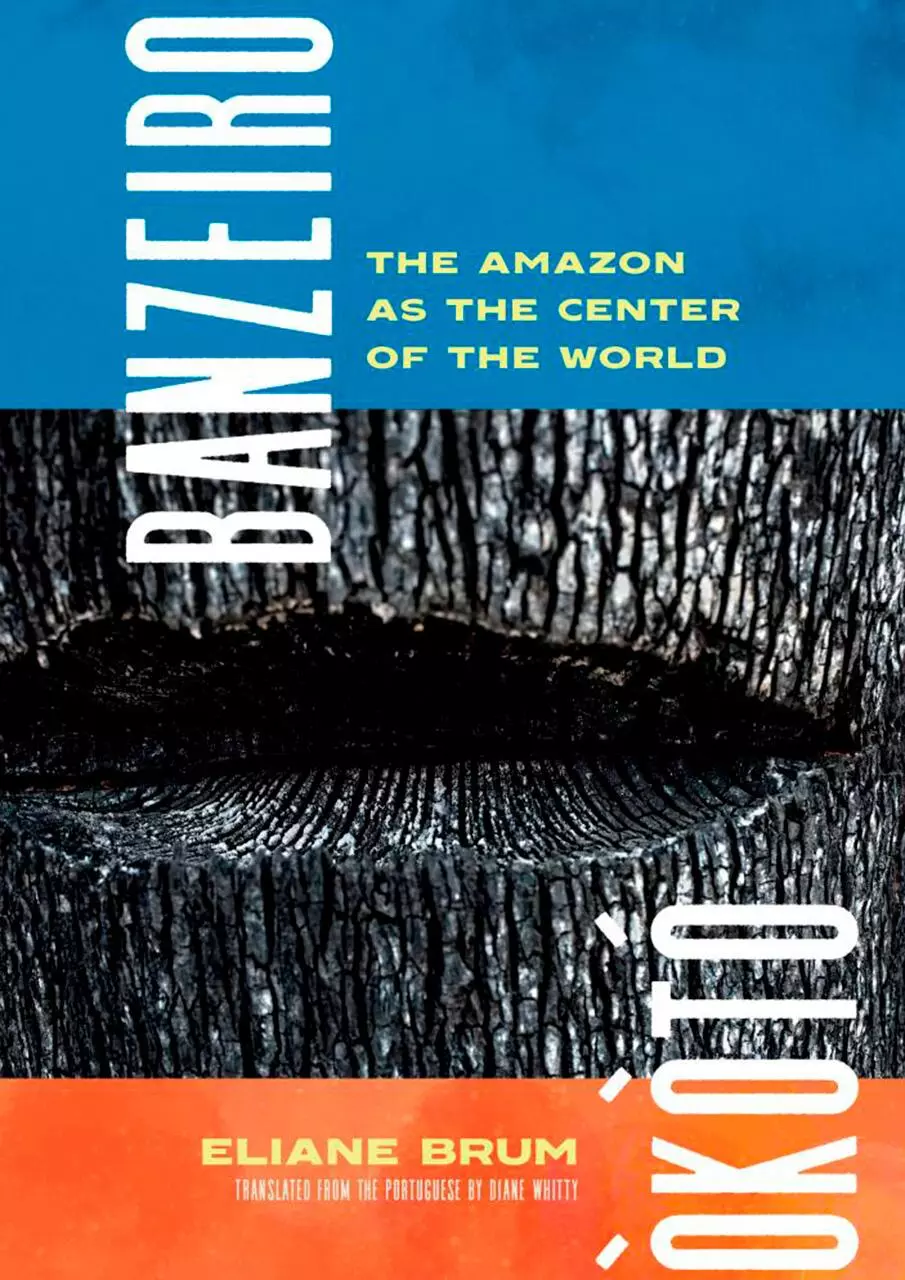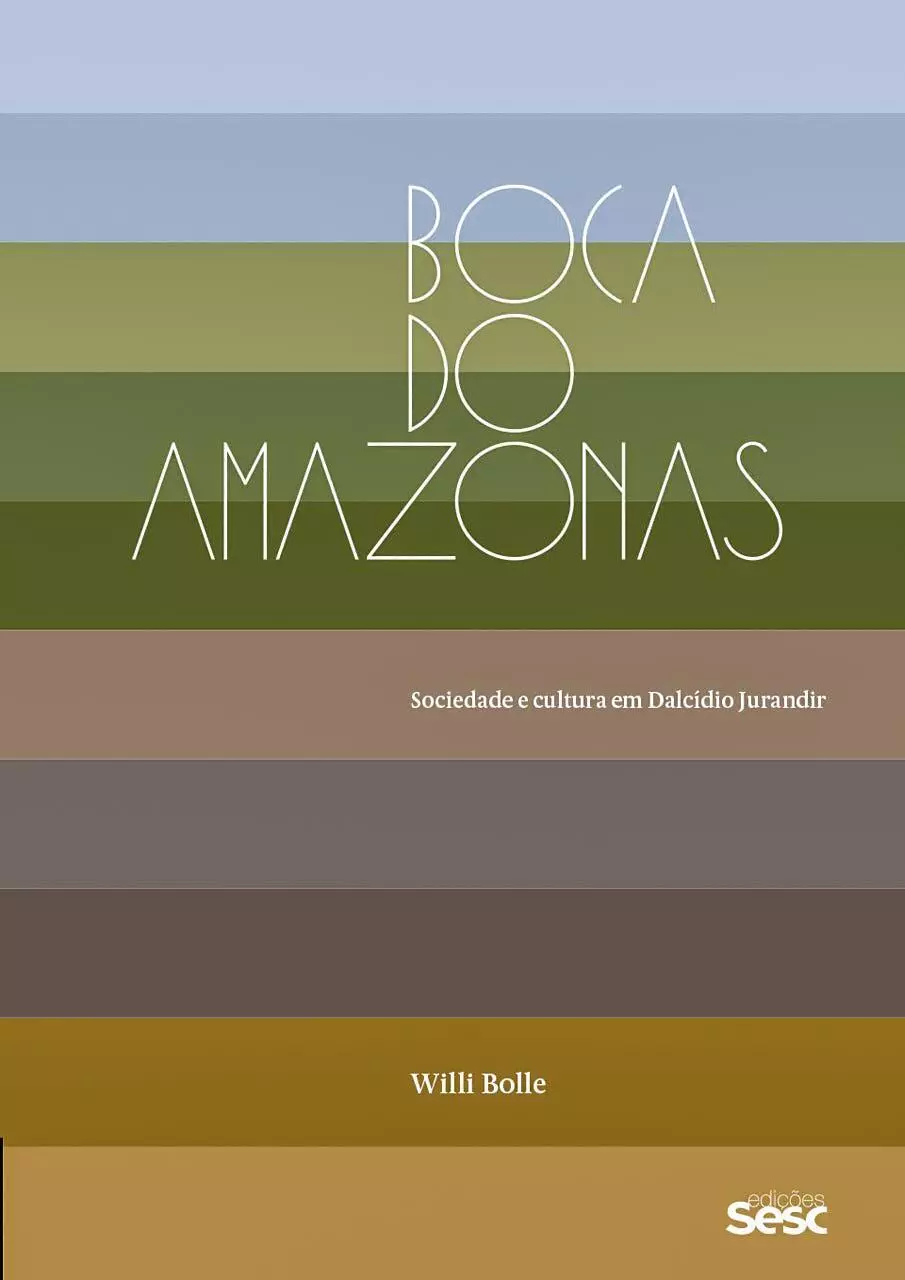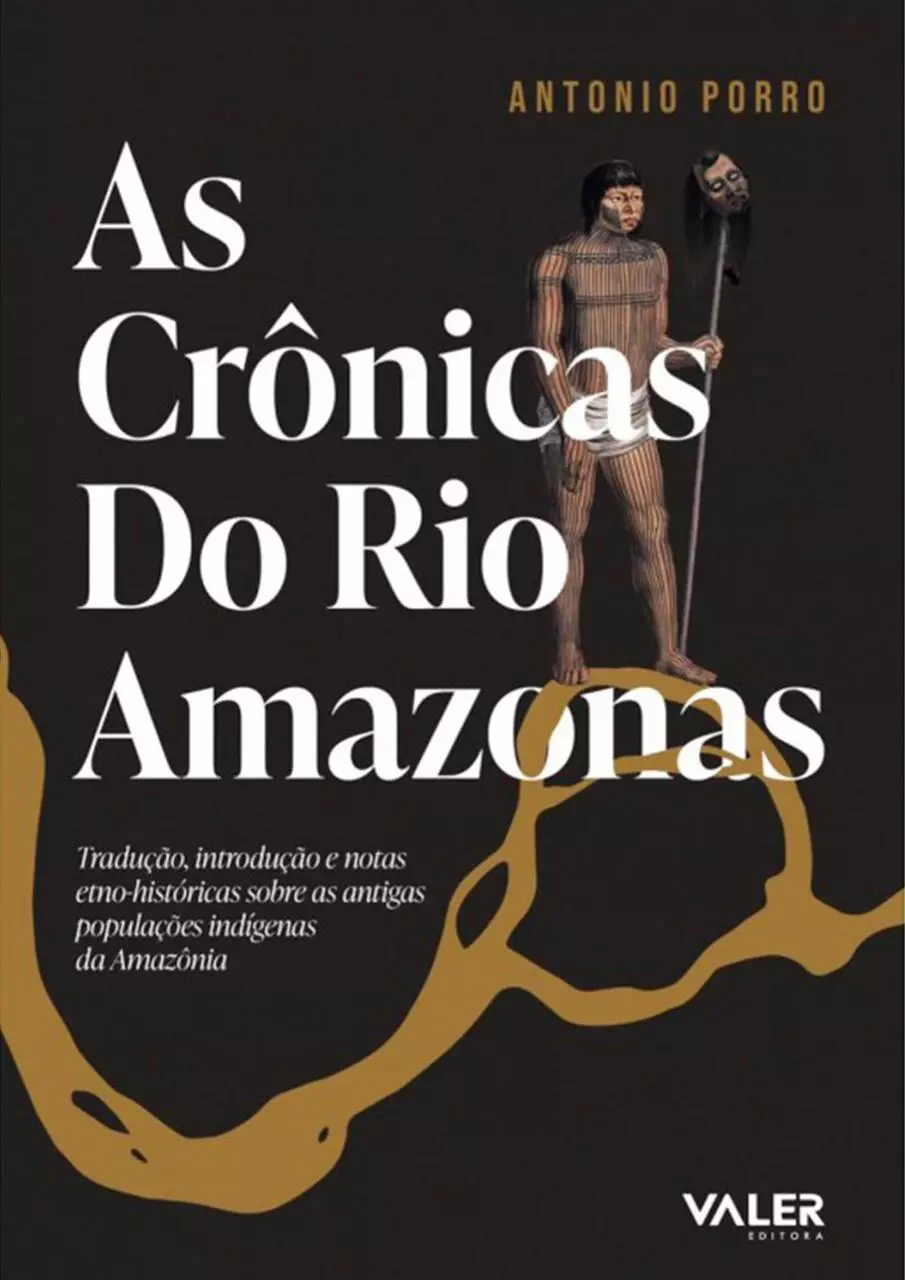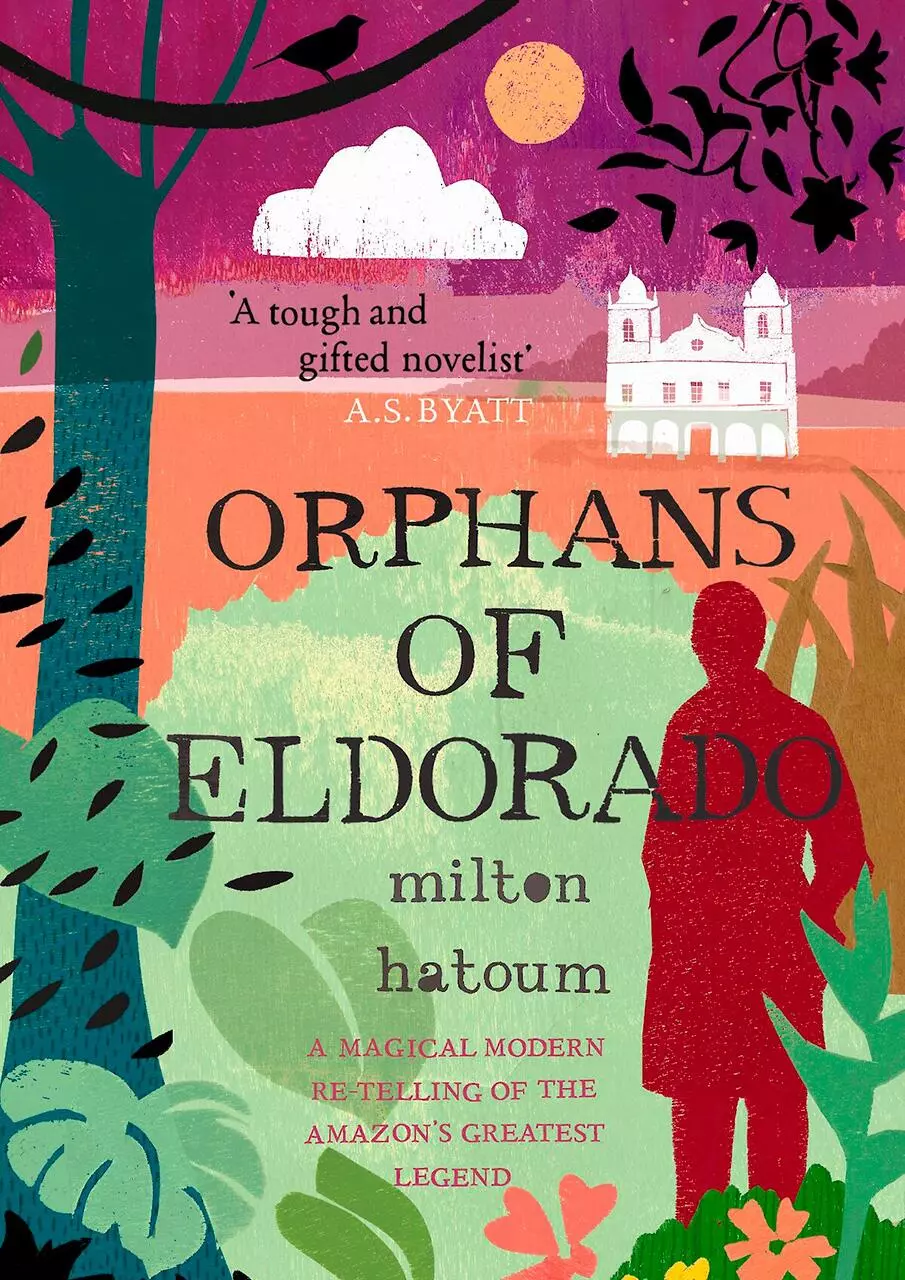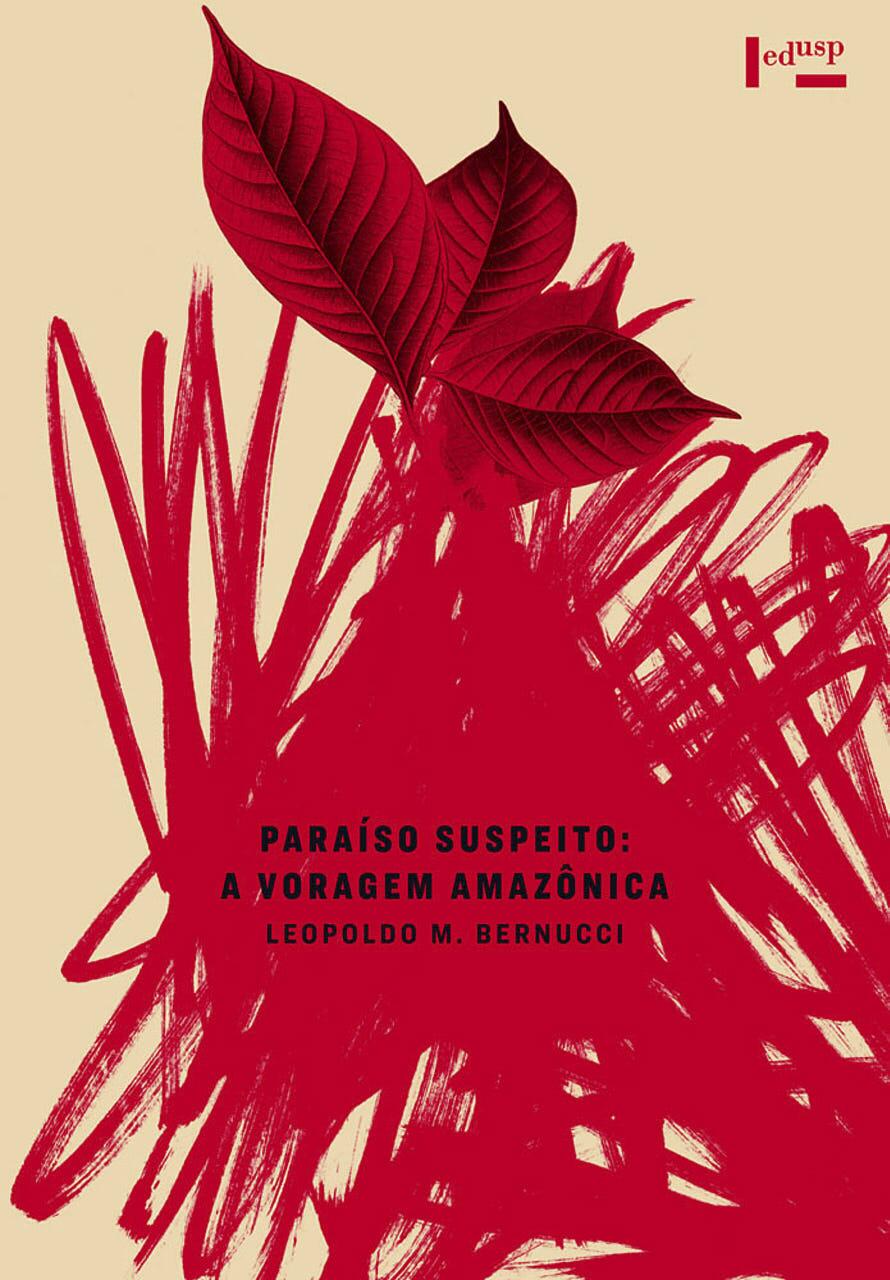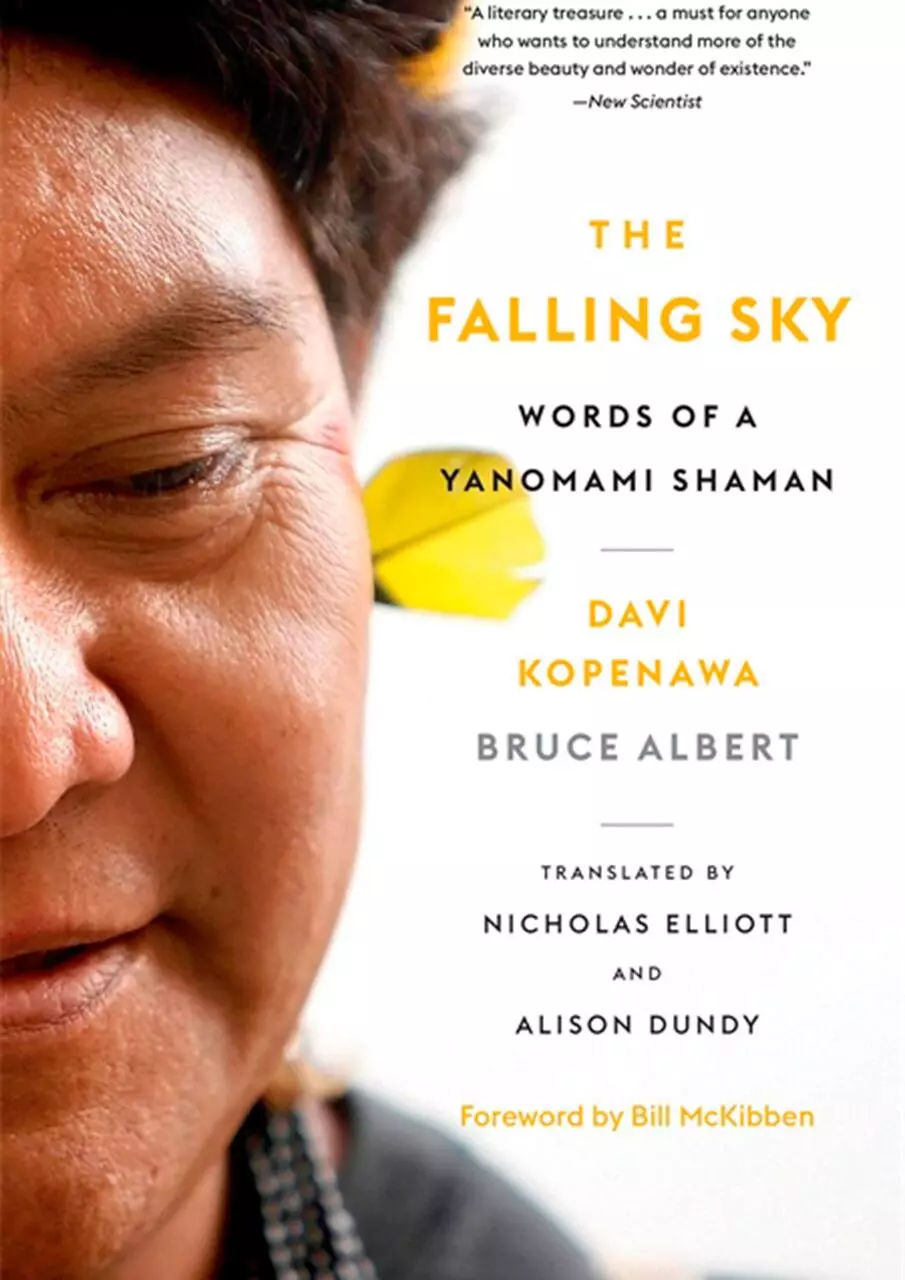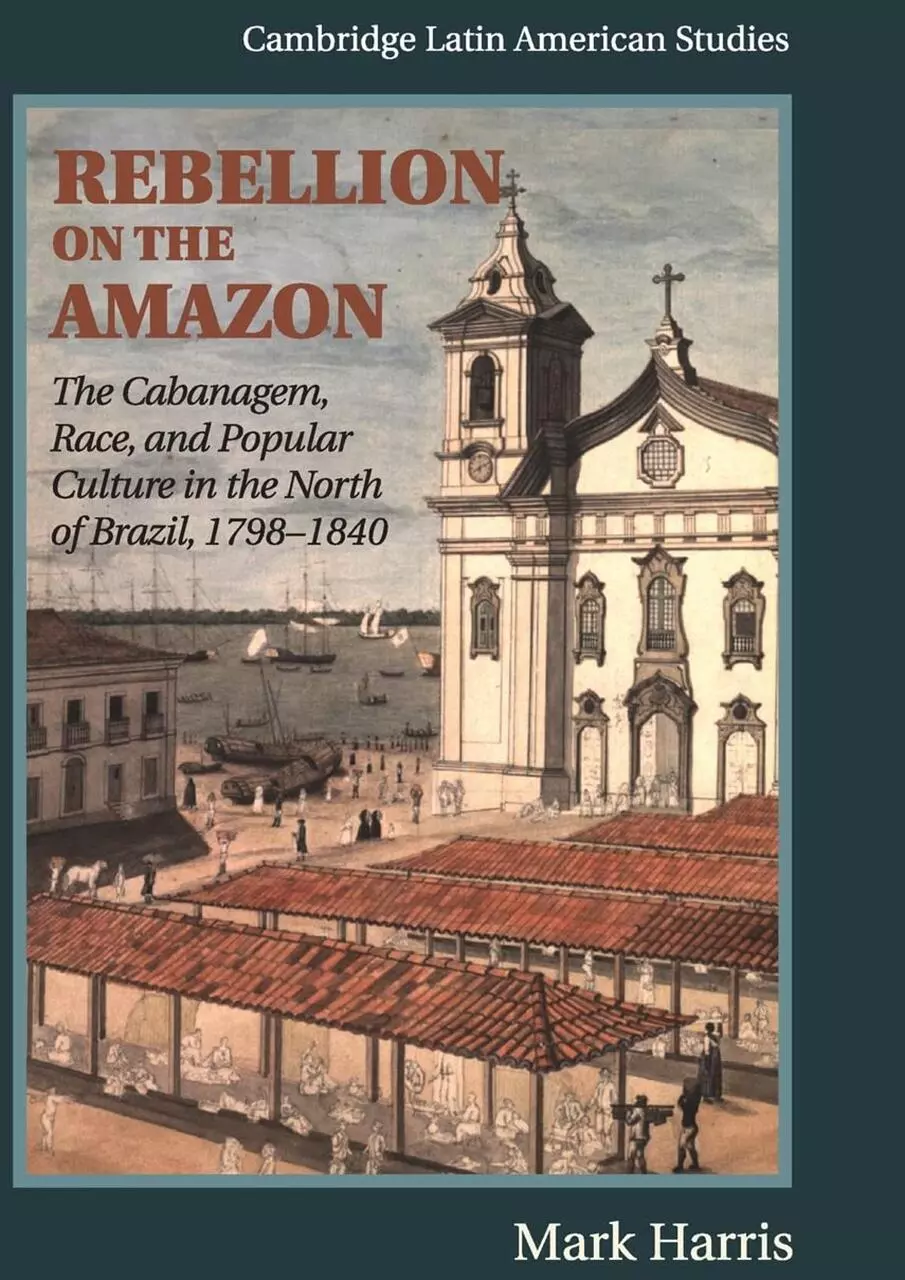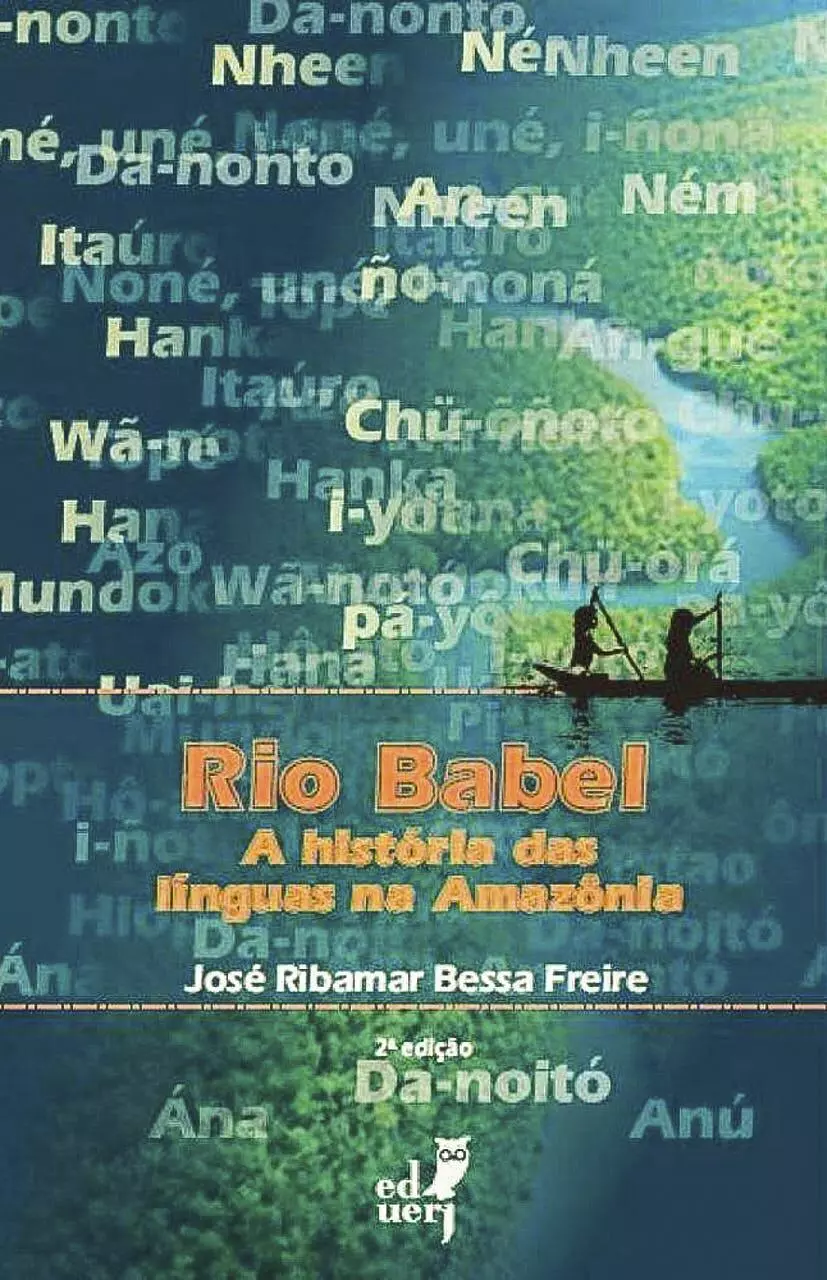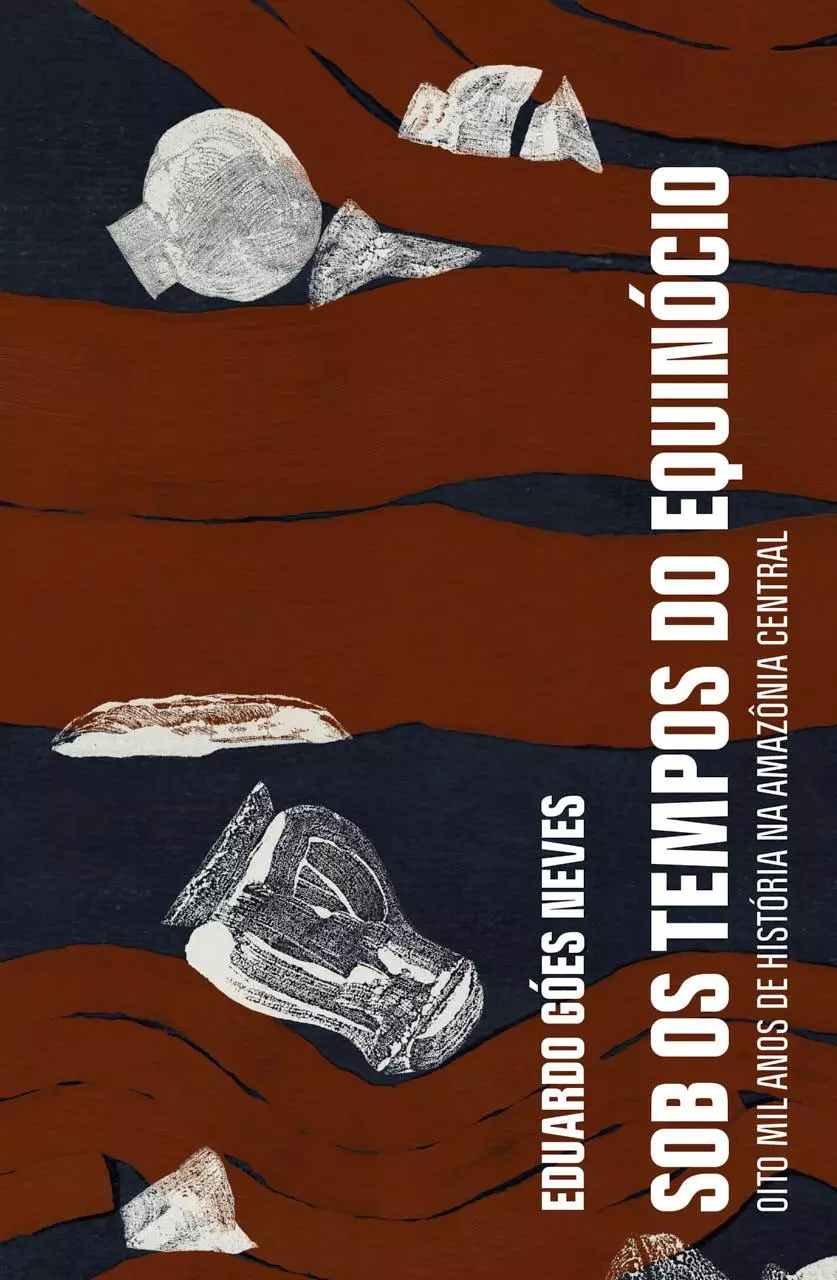It’s a mystery I’ve been trying – and failing – to unravel for years. Next to the Teatro Amazonas (the Amazonas Theatre, also known as the Manaus Opera House), in the most picturesque and bustling square in downtown Manaus, the place is no bigger than a newsstand. In fact, it is a newsstand. But there’s a sign: “Banca do Largo, bookstore specializing in the Amazon, Amazon Bookstore” (the last two words written in English). Inside, I find Joaquim Melo, a man from the Solimões River region. While I can tell from looking at him that, deep down, he burns with passion for the forest and for life, he keeps such feelings to himself. Joaquim “sews on the inside”, as the Brazilian author Clarice Lispector once said. The real mystery is what goes on between these walls, and that secret Joaquim will never tell. Nor should he.
The newsstand has become a bookstore of extraordinary treasures. To the best of my knowledge, there’s no other collection of books on the Amazon – books plural – like that of Banca do Largo. It really is a mystery: the store is the size of a newsstand, yet houses a library, from new releases to collector’s items you might find on pedestals in a museum. The newsstand grows into invisible corridors, labyrinths above our heads, secret trap doors under our feet. If you open a door you can be sure there’ll be another soon after.
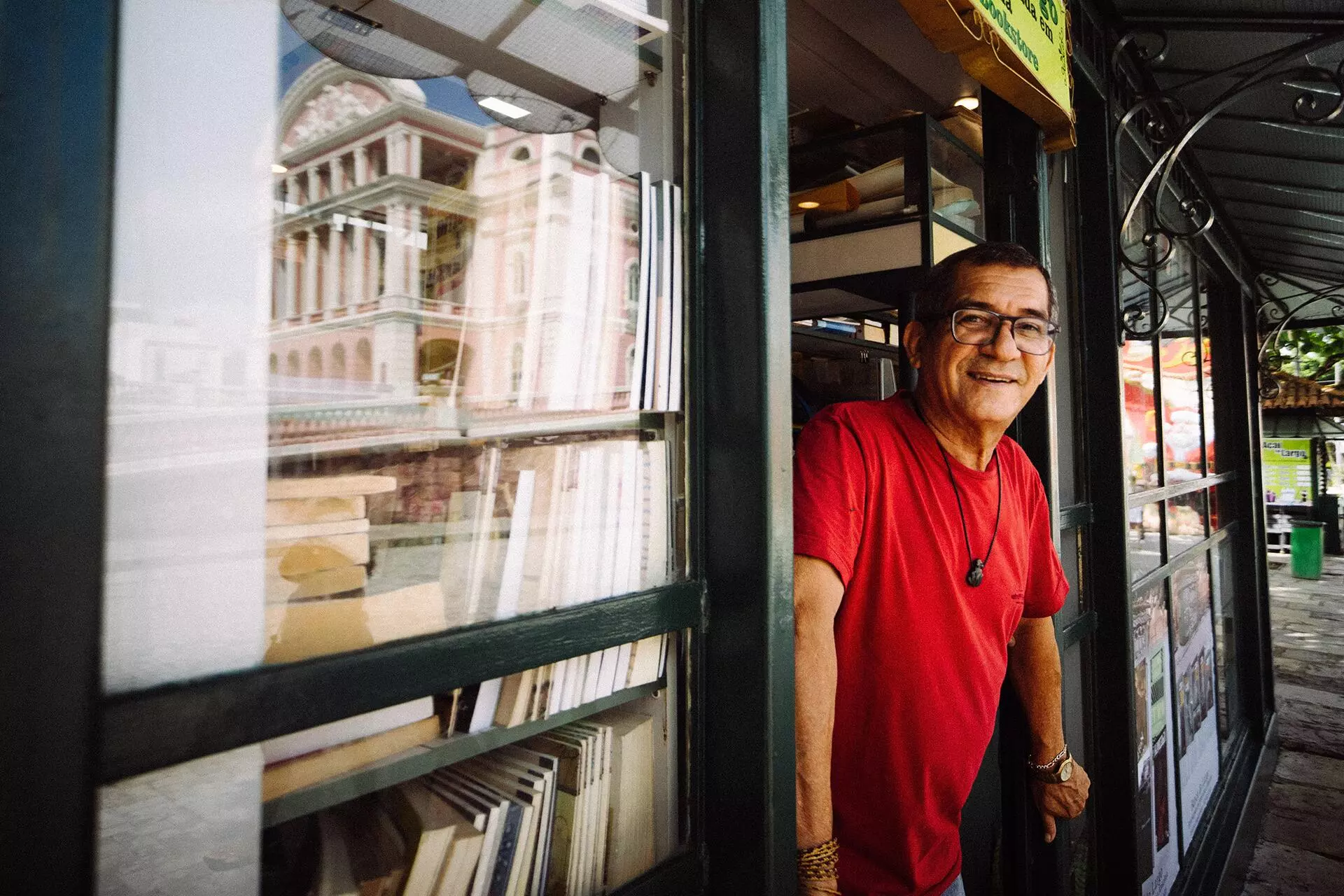
THE BOOKSELLER JOAQUIM MELO NURTURES, WITHIN BOTH HIMSELF AND BANCA DO LARGO, A PASSION FOR THE FOREST AND FOR BOOKS. PHOTO: CHRISTIAN BRAGA/SUMAÚMA
A mystery I can guess at, but not truly see. Since the first time I entered the store, not suspecting what I’d find, suffering palpitations from the strength of my emotions, the image of Ali Baba’s cave, and its infinite treasures, has sprung to mind. I don’t know what Joaquim thinks of such a comparison, which associates him with the greatest fictional thief of them all, because when I describe it, he says only “um” – or I imagine he does. But my only way of explaining Banca do Largo is through the fiction of my childhood, because for me, bookstores will always be associated with discoveries that only assume their true size in the eyes of a child.
The first time I went, I’d been searching for a rare book for decades. My hopes were almost exhausted. But that which I wanted more than anything else at that time in my life was nowhere to be seen in the Banca. Though why would it be? I asked Joachim. He disappeared. I should warn you – Joaquim often disappears into the square. No one knows where he goes. But when he returned he had the object of my desires in his hand. Writing about it now, I feel the same euphoria I felt back then. I put the book I’d wanted so badly in a drawer, which I only open to take the occasional peek. I’m afraid to leaf through it, because my fingers could hurt a page, damage a word, or crush a comma. I can’t do it. If Joaquim can’t find what you need in the mysterious place he disappears to, he won’t say a word. Then one day, you’ll be at home and a package will arrive. Open it and… Joaquim found it. How, he won’t tell.
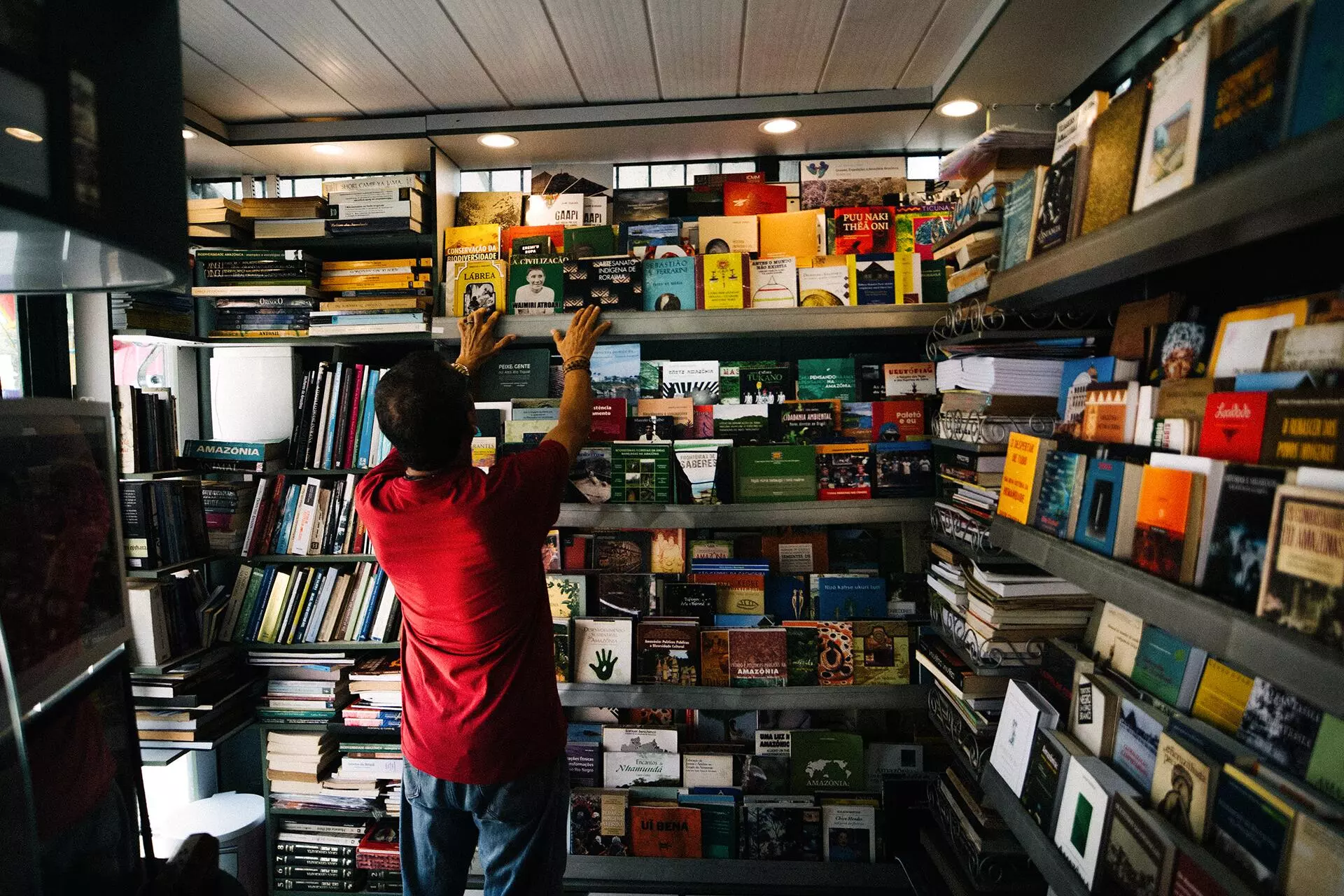
JOAQUIM’S BOOKSTORE IS THE SIZE OF A NEWSSTAND, BUT HOUSES A LIBRARY FOR EVERY REGION OF THE AMAZON. PHOTO: CHRISTIAN BRAGA/SUMAÚMA
I should ask him, and write a news story on Joaquim and Banca do Largo. But I don’t want to. I’d rather stick with the mystery. And this mystery is the best thing I can offer SUMAÚMA readers. Not everything needs to be broken down. So we can reach them, Banca do Largo and the soul named Joaquim who inhabits it must remain unreachable.
And so this is our Christmas present to you: Joaquim Melo is now a SUMAÚMA collaborator. And he starts with a list of books, all of which can be found in conventional bookstores, on their publishers’ websites, or in used bookstores, both physical and online. It’s a starting point for those who want to get to know the Amazon. Reading can be your first act of love for the forest that saves our lives every day.
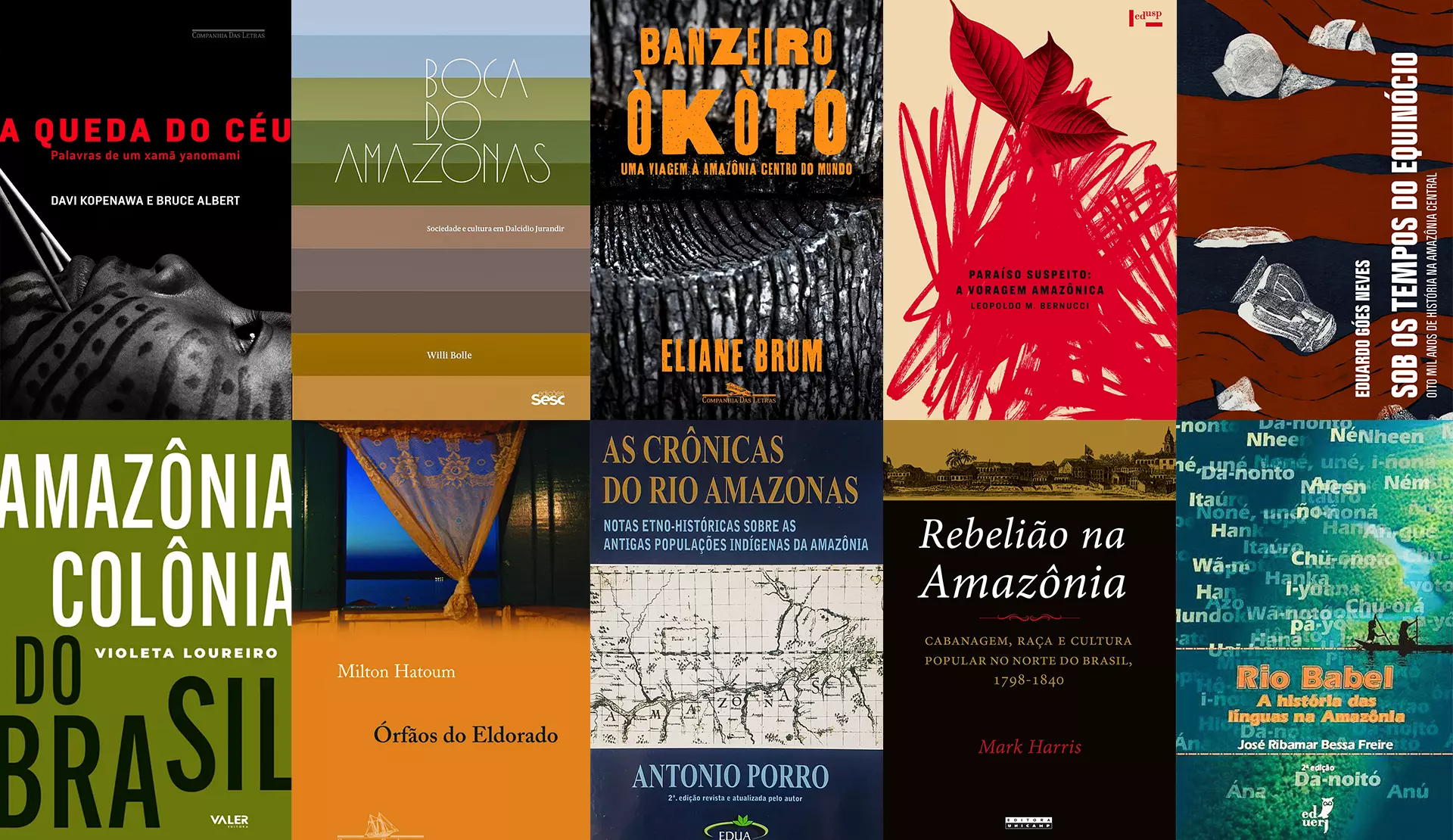
Ten books to (start to) get to know the Amazon. Photo: Christian Braga/SUMAÚMA
Ten books to (start to) get to know the Amazon
Recommending essential books to understand the Brazilian Amazon even a little requires great care – not to mention the understanding, from the outset, that such choices are personal, and that a great many important works have been left out.
There is an almost limitless list of interesting works considered “mandatory reading” which didn’t make it onto the list I’ve prepared, as they’re old, rare, or difficult to find, or which, in their content, are closer to scholarship and specialized research than the interests of the wider reading public. One example is the narrative of the Spanish priest Gaspar de Carvajal, which describes the voyage of the explorer Francisco de Orellana in 1541 and 1542. It was the first written document of a complete navigation of the Amazon River, all the way to its mouth.
Among the naturalist travelers here, such as Charles-Marie de la Condamine in the early 18th century, there is the Viagem Filosófica (“Philosophical Journey”, in English) of Alexandre Rodrigues Ferreira, who produced a wealth of rich material between 1783 and 1892, Tesouro Descoberto no Máximo Rio Amazonas (“Treasure Discovered on the Amazon River”), by Father João Daniel, As Regiões Amazônicas (“The Amazon Regions”), by Barão de Marajó, Ensaio Corográfico sobre a Província do Pará (“Chorographic Essay on the Province of Pará” by Antonio Ladislau Monteiro Baena, As Viagens do Ouvidor Sampaio (1774-1775) (“The Travels of Magistrate Sampaio (1774-1775)”, the Dicionário Topográfico, Histórico, Descritivo da Comarca do Alto Amazonas (“The Topographic, Historical and Descriptive Dictionary of the District of Upper Amazonas”), by Lourenço Amazonas, published in 1852, and the Estudos Amazônicos (“Amazon Studies”), by José Veríssimo, to mention just a few of the significant works produced prior to the 19th century.
Nor should the English writers Alfred Russel Wallace, author of Travels on the Amazon and Rio Negro, and Henry Walter Bates, who wrote A Naturalist on the Amazon, be forgotten. Their works helped support Charles Darwin’s theory of evolution.
From the 20th century, we cannot forget Capitalismo Autoritário e Campesinato (“Authoritarian Capitalism and the Camponese (smallhold farmer)”), by Otávio Velho, Antropologia dos Arquivos da Amazônia (“Anthropology of the Records of the Amazon”), by Alfredo Wagner Berno de Almeida, and [the Brazilian state of] Rondônia, by Roquette Pinto. Finally, História Econômica da Amazônia (“Economic History of the Amazon”), by Roberto Santos, is a careful study of the period between 1800 and 1920, an important era for the rubber industry, and offers important data on the social, economic and political formation of the region, of interest to both specialist and non-specialist readers.
With the introduction taken care of, I’d like to suggest ten books that can introduce the Amazon to those who want to understand it better. Works that are found in both new and used bookstores, and publishers’ websites, avoiding the rarest titles, or those that are out of print.
I looked for works that address important topics and might encourage the reader to delve deeper into primary sources and reference books. Again, while lists like this are always personal, I hope this one is a help to anyone who wants to explore new pathways. The books are arranged in alphabetical order.
Note: Some of the books in this selection are not yet available in English. In these cases, their titles were translated by SUMAÚMA
Amazônia Colônia do Brasil. Violeta Loureiro
‘Amazon: a Colony of Brazil’
A theme I’ve long thought about and defended: the Amazon ceased to be a colony of Portugal to become a colony of Brazil, and was used as a supplier of wealth, from indigenous labor to drugs from the sertão (arid backlands region), and the raw materials extracted from the trees of the forest, rubber, and gold. The government projects implemented here, mostly supported by local elites, have never taken residents into account. A scholar of the Amazon, Violeta Loureiro analyzes and interprets history like few others. It’s a book I wish I had written. Essential reading.
Banzeiro Òkòtó: The Amazon as the Centre of the World. Eliane Brum
In my opinion this is one of the most significant books written today. Eliane Brum describes her experience of living in the Amazon and, through that change, the state of the region in which she lives, condemning the abuses carried out in the forest, and on the lives of ribeirinhos (members of traditional forest communities) and indigenous peoples. I always say that, for anyone who is concerned about and wants to learn about the Amazon today, and how it got to where it is, Banzeiro Òkòtó is indispensable. Brum’s stance, and the themes and debates in the book, mean no one who reads it will remain unchanged. It is a powerful work. [Editor’s note: Thank you Joaquim. Dear readers, I promise I did not twist his arm to include my book.]
Boca do Amazonas: Sociedade e Cultura em Dalcídio Jurandir. Willi Bolle
‘Mouth of the Amazon: Society and Culture in Dalcídio Jurandir’
Dalcídio Jurandir (1909-1979) was a great novelist and, in addition to its literary qualities, I believe that reading his work is vital to understanding the part of the Amazon around the Ilha de Marajó, Belém and the Lower Amazon. Unfortunately, the writer hasn’t received the recognition he deserves, but professor and literary critic Willi Bolle has produced a dedicated study of him. I recommend it. Bolle states that he chose to study the Amazon in the light of Dalcídio Jurandir’s work, as his cycle of ten novels, totaling around 3,000 pages, presents the day to day history and culture of the region. Boca do Amazonas is a thought-provoking entry into the author’s original text.
Crônicas do Rio Amazonas. Antonio Porro
‘Chronicles of the Amazon River’
This work brings together a series of reports into the ancient inhabitants of the Amazon River. Almost all the “chronicles”, as these records were called, were previously unpublished in Portuguese. They were written by Spanish travelers and missionaries, or those acting in the service of Spain in the 16th and 17th centuries, a period when the Spanish disputed possession of the Amazon with Portugal. They are important sources for understanding the history and culture of the indigenous peoples who lived along the river at the beginning of the colonial period. Of particular interest are the texts from the first trip to the mouth of the Amazon (1541-1542).
Orphans of Eldorado. Milton Hatoum
The fourth novel by Milton Hatoum is the chronicle not only of the love of Arminto Cordovil for Dinaura, but of a family that, in a specific time and place, and based on the sap of the rubber tree, sought to embody the secular dreams of an Amazonian el Dorado. As always, the writing of Hatoum – an author of fundamental importance – both captures and entwines itself in a web of myths and mysteries. Light, pleasurable reading that, through desperate passions, brings to light the story of a piece of the Amazon.
Paraíso Suspeito: a Voragem Amazônica. Leopoldo Bernucci
‘Suspect Paradise: The Amazon Vortex’
Essential non-fiction work from South American literature professor Leopoldo Bernucci. Through a meticulous reading of the novel La Vorágine (1924), or The Vortex in English, by the Colombian author José Eustáquio Rivera, and the works À Margem da História (translated into English as The Amazon: Land Without History) and Inferno Verde (which means the Green Hell) – by the Brazilians Euclides da Cunha and Alberto Rangel, respectively – Bernucci travels through one of the most tragic periods in the history of the Amazon, during the rubber boom, when the Amazonian rubber plantations became the horrendous setting of crimes against humanity.
The Falling Sky: words of a Yanomami Shaman. Davi Kopenawa and Bruce Albert
Drawing on conversations between Yanomami shaman Davi Kopenawa and anthropologist Bruce Albert, this work brings the reader an indigenous person’s vision of white people, the myths of his own people, and ancestral knowledge, not to mention his worldview – of vital importance at a time when we are experiencing the destruction of the Amazon. It is a dense book, in which Davi Kopenawa describes periods of his life, including his time at Funai (Brazil’s federal agency of Indigenous affairs), and which deals with environmental, cultural and political themes. It is a work to which one should dedicate time, a book to be read unhurried, a non-fiction Um Grande Sertão: Veredas (The Devil To Pay In The Backlands, in its English translation) [a classic of Brazilian literature by João Guimarães Rosa]. Each sentence should be read, then reflected upon.
Rebellion on the Amazon: The Cabanagem, Race, and Popular Culture in the North of Brazil, 1798-1840. Mark Harris
As the author himself, anthropologist Mark Harris, points out, the Cabanagem rebellion, which took place between 1835 and 1840, was not just a struggle of the oppressed, analogous to so many others around the world between the end of the 18th century and the beginning of the 19th, but a potential separatist struggle. As a popular revolt, it went beyond a single category, embracing a number of groups who considered themselves wronged and exploited: the indigenous, black and mestizo peoples, in an uprising of the oppressed against the colonizer. In this work, Mark Harris collects documents and records from the rebels themselves to reinterpret the movement. A historical ethnography written by an anthropologist.
Rio Babel – A História das Línguas na Amazônia. José Ribamar Bessa Freire
‘River of Babel – The History of Languages in the Amazon’
This book made me see the predatory use of language as an instrument of power, and how it eradicated so many indigenous languages. Some disappeared forever; others are being preserved with difficulty. It is all part of a historical process of domination by the Portuguese colonizers. The book is the result of extensive academic research and is a tremendous help to understanding the process of integration of indigenous peoples in the Amazon region. In the words of the author, “The arrival of Europeans in the Amazon, considered at the time as the ‘River of Babel’, brought about ruptures and a catastrophic reorganization, concentrated in language as one of its organizing principles”. An essential book for understanding the Amazon.
Sob os Tempos do Equinócio – Oito Mil Anos de História na Amazônia Central. Eduardo Góes Neves
‘In the times of the equinox – Eight thousand years of History in the Central Amazon’
The result of years of study by an archaeologist who, in my opinion, is the greatest authority on archeology in the Amazon today, this book recounts an eight-thousand-year history, through revelations of the process of human occupation in the region. The text is the result of an academic study originally presented as an associate professorship thesis in 2013, but should reach a much wider audience than specialized readers. For those interested, the writing of Eduardo Góes Neves brings the history of the indigenous peoples of the lowlands and the Amazon closer.
Joaquim Melo. Bookseller, and the owner of Banca do Largo, a bookstore specializing in the Amazon, in the city of Manaus, capital of the state of Amazonas. He has a degree in Economic Sciences from Rio Grande do Norte Federal University, and a post-graduate qualification in the History and Historiography of the Amazon from the Department of History of Amazonas Federal University, and a master’s degree in Society and Culture from the Postgraduate Program in Society and Culture of the Amazon, also from Amazonas Federal University.
Translated by James Young
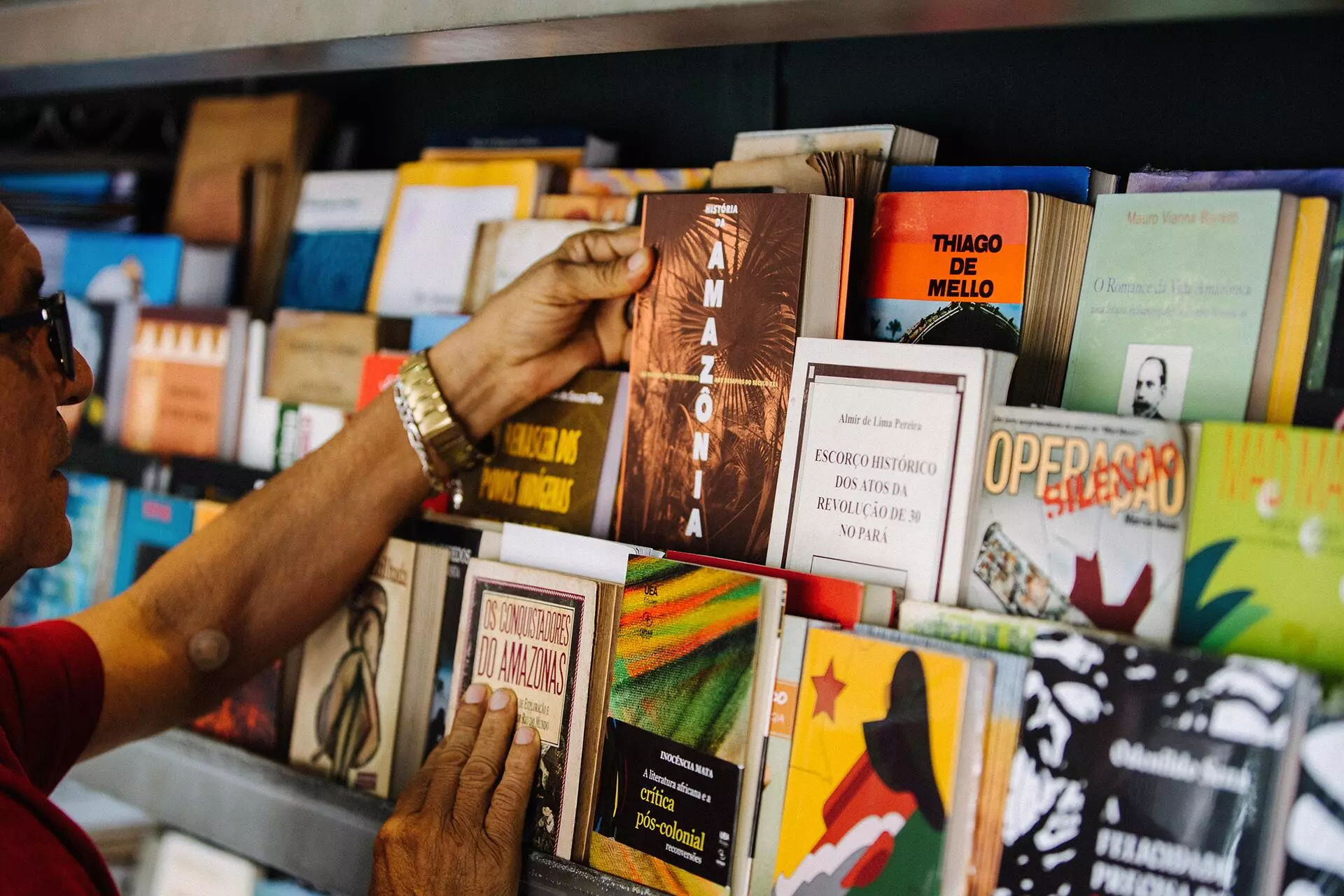
EL LIBRERO AMAZONENSE JOAQUIM MELO (1958-2023) EN LA BANCA DO LARGO, EN MANAOS. FOTO: CHRISTIAN BRAGA/SUMAÚMA





